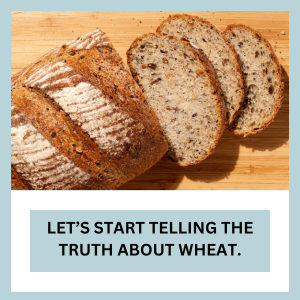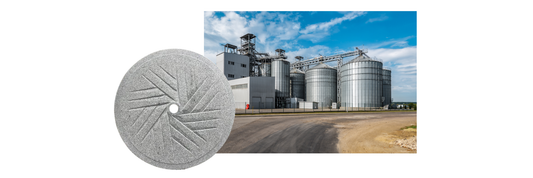How to Measure Flour by Weight and Why it Matters
If you’ve recently started baking with fresh milled or stone-ground flour, welcome to the journey! Stone-ground flour is fresher, heartier, and more flavorful—but it can also be a little different to work with compared to the all-purpose flour you might be used to from the store.
One of the first shifts many bakers notice is that recipes written for fresh-milled or stone-ground flour often suggest measuring by grams instead of cups. That may feel intimidating if you’ve always reached for your measuring cups—but don’t worry, this small change makes a world of difference in your baking.
Why Measure Cups Aren’t Accurate
When you scoop flour into a cup, the amount you actually get depends on so many little variables:
- Did you scoop directly or spoon it in?
- Was the flour packed down or sifted first?
- How humid is your kitchen?
With fresh-milled and stone-ground flour, the variation is even greater. It’s a little coarser, and the bran and germ can make it “fluffier” or heavier depending on the batch. This means that a cup of stone-ground flour today might not weigh the same as it did yesterday—and your bread could turn out denser than you want.
Why Grams Are Your New Best Friend
Measuring by weight solves all of these problems. A gram is a gram, no matter how you scoop. This consistency gives you:
- Reliable results – Your favorite bread will turn out the same way every time.
- Easier experimenting – When you want to swap in whole wheat for an all purpose, rye, or spelt, you’ll know exactly how much you’re using.
- Confidence – No second-guessing if your measuring cup is packed too tightly.
Think of your kitchen scale as your new secret weapon. It’s one of the simplest upgrades you can make as a baker. It made me so much more confident in my baking!
How to Measure Flour with a Scale
Switching from cups to grams is super easy! Here’s a quick step-by-step:

-
Place your mixing bowl on the scale.
Turn on the scale and make sure it’s set to grams. -
Zero the scale
Press the “tare” or “zero” button so the display reads 0, ignoring the weight of the bowl.
-
Scoop and pour
Add flour directly into the bowl until you reach the number of grams your recipe calls for. -
Check and adjust
If you go a little over, just scoop some out. If you’re under, sprinkle more in.
And that’s it! Super easy.
How to Convert a Recipe
For reference, 1 cup of all-purpose flour is usually around 120–125 grams. Fresh-milled and stone-ground flours can vary slightly, but this gives you a good starting point. If your recipe is written in cups, just multiply the number of cups by 120 to get a rough gram equivalent.
Embracing the Joy of Stone-Ground Flour
Part of the beauty of baking with fresh-milled, stone-ground flour is that it asks us to slow down and pay attention. Using a scale honors that process—you’re measuring with care, just as the flour itself was milled with care.
Next time you’re baking with fresh-milled or stone-ground flour from Janzen Milling or your own kitchen, try using a scale! Your breads, muffins, and pastries will thank you with better texture, flavor, and consistency every time.
Happy baking!



